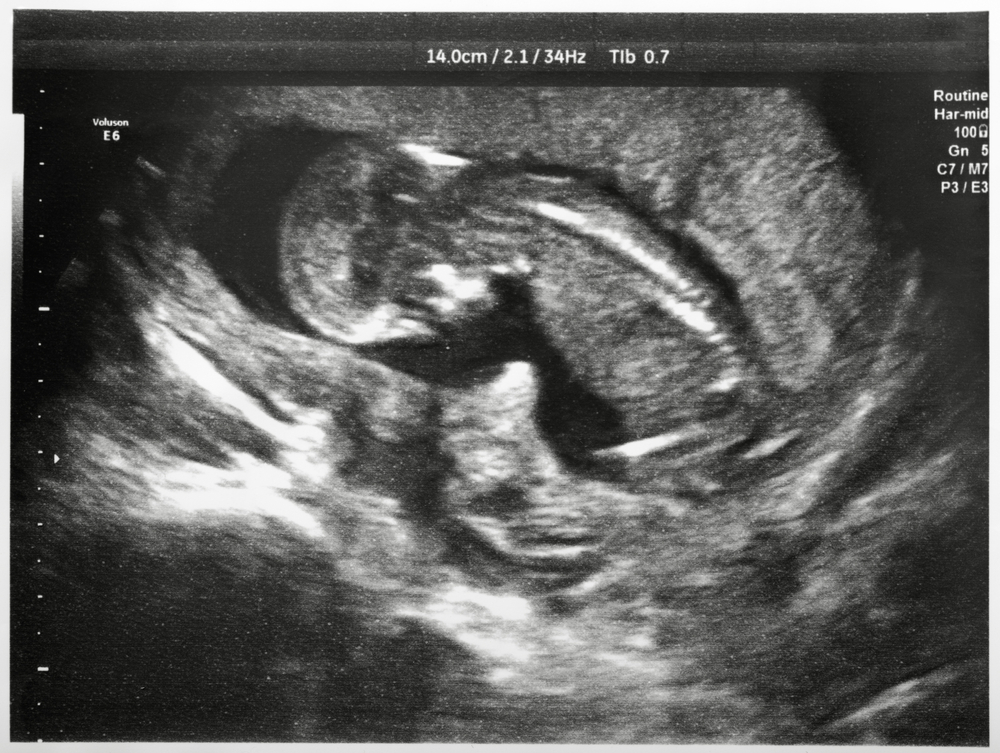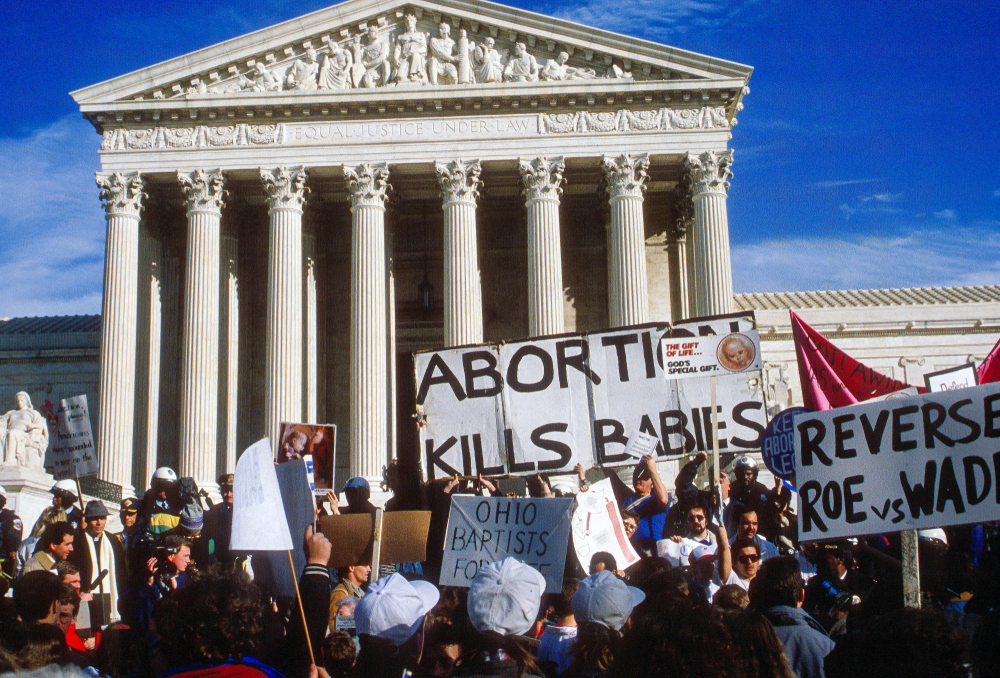With an abundance of information at our fingertips, the science behind the pro-life argument has never been more understood than it is today.
Women can now learn more about their pregnancy than their grandmothers ever could. The information we know now was not readily available to the average woman of the Roe generation. Scientific discoveries, technological advancements, and increased access to new information all point to the sanctity of human life.
For example, the use of fetal ultrasound machines only started to become more widely used in the 1970s, changing the way women were able to connect with their preborn babies. Science continually validates the humanization of preborn lives, favoring the pro-life argument.
Introduction to Pro-Life Science
People look to science to give them insight on topics like the mental health ramifications of women post-abortion, the biology of fetal development, whether fetuses can feel pain, the physical and emotional effects of abortion on women during and after various abortion procedures, and more.
Religious, moral, and ethical arguments can be better amplified through science. Although we are living in a time where objective truth is offensive to many, perhaps biological and scientific fact can grip the hearts of those swayed by the world’s confusion
Defining pro-life: Terminology and perspectives
When discussing the pro-life movement, it’s essential to understand the terminology and various perspectives that exist. Pro-life refers to the belief that a fetus has a right to life, and thus, abortion should be restricted or prohibited.
The opposing view, pro-choice, advocates for a woman’s right to choose whether to continue or terminate a pregnancy. While some may identify as pro-choice, not all would advocate for unlimited abortions.
The relevance of science in the pro-life debate
Science plays a crucial role in the pro-life debate by providing evidence-based information on fetal development, abortion procedures, and their consequences. This knowledge is vital in shaping informed opinions and promoting constructive dialogue.


Fetal Development & Viability
The life of a preborn baby is often described in a way that minimizes its value. Because if we avoid humanizing fetuses, abortion is deemed okay. The PR machines of the abortion industry try to justify the horrendous acts it commits, yet many are ignorant of the reality of fetal development.
The preborn heart begins beating and pumping blood in the earliest stages of heart development, between 21 and 24 days after conception. Thankfully the Texas Heartbeat Law brought national attention to this fact. The heart is the first organ to function in a human embryo, as it pumps blood to create rapid growth.
Milestones in fetal growth
While a pregnancy may be callously referred to as a “clump of cells” by some, a fetus (defined in the dictionary as an unborn baby) is not a mere ball of tissue.
First, a fertilized egg is considered a germinal that becomes an embryo that quickly becomes a rapidly developing fetus.
Fetal development progresses through various milestones:
1. Fertilization: The sperm and egg unite, forming a zygote.
2. Implantation: The zygote attaches to the uterine wall, becoming an embryo.
3. Organogenesis: The embryo’s organs start to develop.
4. Fetal stage: After 10 weeks, the embryo becomes a fetus and continues growing and developing.
Ph.D. Andréa Becker found it interesting how little public attention is given to fetal development in all stages of pregnancy. Becker examined countless research papers, pondering how various groups define and refer to the fetus. Becker found that one, “Abortion provider and scholar Lisa Harris (2008, 2019) describes acknowledging that abortion ends potential life, especially once a fetus starts to resemble a small baby. This is both danger talk and one of the ˜things we cannot say’ in abortion care.”
Abortion providers know that humanizing the life they’re terminating affects their bottom line, so they must be careful to maintain ambivalence and sterile boundaries to avoid mothers creating emotional connections to their children.
The viability debate: When does life begin?
Some argue that life starts at conception, while others believe it commences at a later stage, such as when the preborn baby can potentially survive outside the womb. This discussion has significant implications for the pro-life movement and informs legislative decisions on abortion restrictions.
A new scientific discovery found that the moment a sperm fertilizes an egg, light is emitted in the womb. Scientific Reports describes the light as an explosion of zinc fireworks, the signature that life is formed.
God is in even the smallest of details. John 1:4-5 says, “In Him [Jesus] was life, and the life was the light of men. And the light shines in the darkness, and the darkness did not comprehend it.” (NKJV). God stamps his signature at the moment of our creation, marked by light. This is
scientific evidence that even at the earliest stage of gestation, preborn life is precious and should be protected.
But, what does a biologist say when life begins? Americans are no longer unified under the logical consensus that human life begins at fertilization as “only 38% of Americans view fertilization as the starting point of a human’s life.” Another study found that 45% of Americans believe life beginning at conception is a “philosophical or religious belief,” not rooted in biological and scientific fact.
Biologists from 1,058 academic institutions were surveyed, and 96% affirmed that life begins at fertilization. Perhaps the other 4% decided to leave objective truth up to personal opinion and feeling.
Abortion Procedures and Their Impact
Depending on what stage of development the baby is in, abortion procedures vary.
Common abortion methods
Abortion methods vary depending on the stage of pregnancy and include:
Medication abortion (AKA the abortion pill)
Drugs like mifepristone and misoprostol to terminate a pregnancy up to 10 weeks. First mifepristone starves the baby of nutrients. However, if the abortion reversal pill, progesterone, is administered, then the effects of the mifepristone can be countered to save the baby. After the first pill, misoprostol is taken to force contractions to expel the dead or dying baby.
Vacuum aspiration abortion (D&C) Typically this method is performed up to 14 weeks gestation. A suction device removes the baby along with the placenta. Then other tools are used to scrape the lining of the uterus to ensure all baby parts are expelled so that infection should not occur. At this stage in pregnancy, a baby’s nerve cells have developed rapidly, and the baby can respond to touch.
Dilation and evacuation (D&E)
A combination of suction and surgical tools removes the fetus and placenta after 16 weeks. This procedure is used during a second trimester or late-term abortion. First, the cervix must be dilated for one to two days to prepare for the evacuation procedure. Suction is used to vacuum out the placenta, but unlike earlier abortion methods, the baby is too big to fit through the suction instrument. The baby must be removed in pieces with a clamp.
Complications from this procedure may include uterine perforation, cervical laceration, infection hemorrhage, maternal death, and future pregnancy complications.
The physical and emotional consequences
Abortion can have both physical and emotional consequences. Physical risks include uterine perforation, cervical laceration, infection hemorrhage, maternal death, and future pregnancy complications.
Emotional effects are highly individual and can range from relief to regret, guilt, or depression. A new retrospective study found that:
â— “Only wanted abortions were associated with positive emotions or mental health gains.
â— All other groups attributed more negative emotions and mental health outcomes to their abortions.
â— Sixty percent reported they would have preferred to give birth if they had received more support from others or had more financial security.”
Ethical Considerations in the Pro-Life Debate
Although some proudly share their abortion story, other pro-choice advocates simply believe abortion is a necessary evil. While they acknowledge abortion ends a human life, they believe a woman’s right to choose is more important than the life of a nameless fetus.
The retrospective study surveyed women with a history of abortion and found that 43% believed abortion is inconsistent with their values and preferences. However, they elected for the abortion anyway.
Another study showed that 58.3% of the women who went through with an abortion, did so to satify others (family, partner, etc.) and 66% of the women who had an abortion believed they were making a mistake in having the abortion.
Moral arguments for pro-life views
Pro-life supporters often argue that life begins at conception and that abortion is morally wrong because it ends an innocent life. Some base their views on religious beliefs, while others argue from a philosophical standpoint.
There is a misconception that to be pro-life is to be religious, and that pro-life activists are just pushing their religious views. The Secular Pro-Life organization says, “You don’t have to be religious to have a problem with killing humans.” A preborn baby is a human life, and human life is valuable and deserving of protection.
Balancing women’s rights and fetal rights
The pro-life debate involves the complex task of balancing women’s rights to bodily autonomy and reproductive choice with the rights of the fetus. While pro-life advocates prioritize the baby’s right to life, pro-choice supporters emphasize the importance of a woman’s right to make decisions about her own body and life circumstances.


Legal Aspects of the Pro-Life Movement
Legislation, politics, and social opinion are all impacted by scientific fact as a basis of understanding. Significant court cases and legislation have shaped the legal landscape surrounding abortion.
Key court cases and legislation
In the United States, the landmark case of Roe v. Wade in 1973 established a woman’s legal right to abortion. However, subsequent cases and legislation have modified and limited access to abortion services because of the scientific facts that the case was founded on.
Roe v. Wade was based on fetal viability being understood to be around 28 weeks gestation. As science has progressed, younger babies can survive outside the womb. The age of fetal viability is still heavily debated. Yet, the logic of Roe stood on faulty grounds wherein the 2022 Dobbs v. Jackson Women’s Health Organization case could challenge the ruling’s validity. This new landmark decision interpreted that the Constitution of the United States does not grant a right to abortion.
The Role of Education in Shaping Opinions
Often when people are presented with the full picture of what abortion really is, they change their minds. Understanding the intricate details of fetal development humanizes the baby, points to a Creator, and convicts hearts. Becoming aware of the brutality of the various forms of abortion procedures changes perspectives too. They are not simple, standard procedures—they can have lasting physical and emotional effects.
PreBorn! Network Clinics discuss with women about abortion, adoption, and parenting. The Clinics explain the abortion procedures at their various stages so that women are informed of what will happen to their bodies, and their preborn babies, if they were to visit an abortuary to go through with the procedure.
Conclusion
The pro-life message is that a fetus is a life, and it is a human life, deserving the right to life just as much as any of us. We are living in the information age, and technology makes it easier than ever to comprehend the humanity of preborn lives, mimicking each stage of fetal development.
Pregnant moms can track, in real-time, all of the rapid changes their baby is undergoing week by week during pregnancy.
While information is more readily available, we also live in a deceived generation that prefers subjective truth to scientific fact. Women vulnerable to abortion need compassionate lovers of Jesus to speak truth and love into their lives, empowering them to choose life.
PreBorn! Network Clinics offer vital support services for pregnant women, such as prenatal care, counseling, financial assistance, and parenting classes to help women make informed decisions about their pregnancies and access resources that may encourage them to consider alternatives to abortion.











